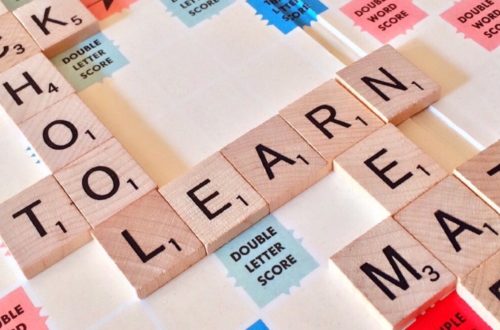
Month of the Military Child: Teen Perspective
by Emily Trimillos
Month of the Military Child is widely celebrated in schools throughout the United States in April. As a military kid (MilKid) myself, I grew up seeing it first-hand and I appreciate the efforts adults everywhere put into celebrating us. But I find Purple Up celebrations often feel focused on supporting elementary students instead of teenagers (MilTeens). Schools and families should include MilTeen voices in planning events too to ensure celebrations are meaningful to all students. Here are a few ideas for ways schools can plan a successful Month of the Military Child for students in high school.
Why We Celebrate
The first thing to consider when planning Month of the Military Child is understanding why we celebrate. MilKids and MilTeens are celebrated because of the sacrifices they make so their parents can protect our country. During Purple Up, schools recognize the times military families moved and had to start over. They acknowledge all the nights military students went without a parent because the parent was deployed for a long time, or the parent was on Temporary Duty (TDY) for a short time. Schools thank MilKids and MilTeens for all their hidden sacrifices that allow us to sleep in peace at night knowing our country is safe.
Another important thing to remember is that during April’s Month of the Military Child, schools are celebrating the military child. Though important to celebrate their military parents too at other times of the year, such as Veteran’s Day, this month is not about the parents.
Military parents and children make different sacrifices and deserve separate recognition. Celebrate MilKids and MilTeens during Month of the Military Child.
Planning the Month
As schools plan out Month of the Military Child activities, there are many people who should be involved in planning.
A Mix of Students
Make sure that both MilTeens and their non-military-connected peers are included in the planning.
- Start by inviting student leadership clubs and student council to participate in the planning fun.
- If your school has JROTC, Student2Student, or Military Kid Clubs, ask them to join as well.
Mixing military students with students who are not connected to the military when planning activities will ensure the events are fun and meaningful to all students, no matter their military connection. Non-military classmates will be able use this planning time to get to know and understand their military-connected peers better. They can start to see MilTeens as real teens and not just stories of adventure or travel. Inviting a diverse group of student planners to share perspective allows MilTeens to spend time with their peers and help break barriers to friendship or social connection. MilKids and MilTeens may be different from their peers in some ways, but they make amazing friends. Having MilTeens and non-military teens mix encourages new ideas and new friendships.
Adult Leaders
It is also important to have a counselor, teacher, or other school official share perspective and look over the students’ plans before they are shared with the rest of the school.
The adult leadership will help keep plans focused and achievable. They may also offer ideas that the school would like to see too. Perhaps the school has extra money to spend in April or knows a community partner who might be willing to buy every MilTeen an ice-cream sandwich. Student planners won’t know unless the adult sponsors help.
Ideas to Celebrate MilTeens
Collect and Share Stories
One way to celebrate high school MilTeens is to ask them to share their story.
Reach out to MilTeens in a military-focused club, if the school has one, and MilTeens in the classroom to find stories that accurately describe the life of a military student. Students can submit their stories or be interviewed to create the stories.
Here are a few great questions to ask any MilTeen:
- Where was your favorite duty location?
- How is this school similar or different from your last school?
- What is a great way to keep in contact with your friends from past assignments?
It is important not to ask: “Where are you from?” This is a really difficult question for MilTeens to answer and it could mean a lot of things. Instead, ask more specific or individual questions, such as:
- “Where were you born?”
- “Where did you live last?”
- “Where have you lived the longest?”
- “Where was your favorite place to live?”
- “What is a special memory you have from one of these places?”
Once the stories are collected from around the school, share them! Consider putting stories in the school newspaper or on the school broadcasting system. Another great way for them to be shared is to put a few of them into the yearbook.
The stories will help MilTeens see they are not alone and help their classmates see what their military peers have lived through.
Maps
A second way to celebrate MilTeens is to set up maps around the campus, where they can put a tack showing the places they have lived.
Classes could take a walking field trip around campus to look at and compare each of the maps. This way, students are able to see all the amazing places their military peers have lived.
Wear Purple
Another idea to celebrate MilTeens is the classic way to show support during Purple Up: wear purple. Encourage students to all wear purple on April 15 or whichever pre-selected day works best for the school calendar.
In high school, the best way to get student involvement is to make Purple Up a competition between the grade levels to see who wears the most purple.
Make it Fun!
When celebrating Month of the Military Child, the most important thing to remember is to make it fun. This is an opportunity to connect the freshmen, seniors, adults, and anyone else in the school involved in supporting military teens. Enjoy your Month of the Military Child!
Emily Trimillos is a military-connected teen and a freshman in high school. She has experienced five military-connected moves, within the United States and overseas. In her six different school transitions, she has implemented military kid clubs and student ambassador programs. Emily finds unique opportunities to speak to school and district leaders on how to best hear and support her military-connected peers.
More about Month of the Military Child celebrations:



